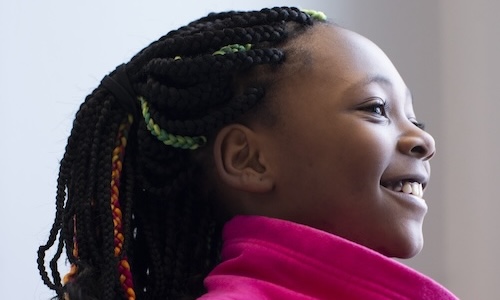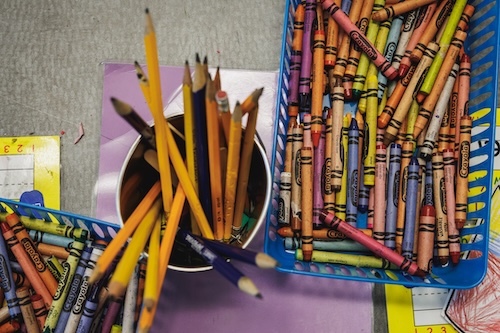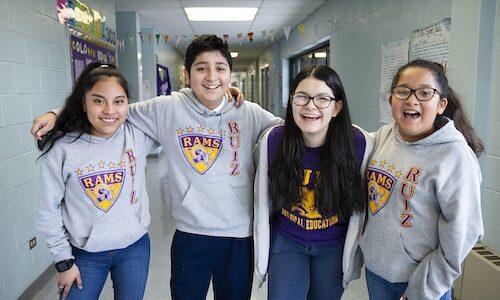
Spring may have just arrived in many parts of the country, but now is the time to start thinking about summer and how it can be leveraged to support students and close opportunity gaps. Summer has often been a time that students have unequal access to high-quality programming, and it is particularly important after two years of disrupted learning amidst the pandemic.
My colleagues Angela Johnson, Elizabeth Barker, Megan Kuhfeld, and James Soland on the NWEA research team recently released studies using MAP® Growth™ assessment data that examined student progress during the school year and over the summer. Their work reveals important information about the degree to which being in school reduces opportunity gaps and points to the importance of summer programming in supporting student success.
On a positive note, the research shows that rural students, students with disabilities, and English learners make academic gains at rates equal to or faster than their grade-level peers during the school year. However, these students also experience greater learning loss in the summer, leading to persistent gaps and diminishing school-year gains.
These findings should persuade policymakers and education leaders to prioritize high-quality summer programs and interventions. Maintaining the momentum that these historically underserved students demonstrate during the school year has the potential to improve their academic trajectories over the course of their lives.
Summer slide across subgroups
Some highlights from the research studies follow.
On students living in rural communities
“The forgotten 20%: Achievement and growth in rural schools across the nation” shares the research by Johnson, Kuhfeld, and Soland, which examined the academic performance of K–8 students nationwide and found that while rural students came into kindergarten with higher achievement levels in math and reading than their non-rural peers, that advantage faded by the end of third grade. By then, non-rural students consistently outperformed those from rural communities across the grades.
Maintaining the momentum that these historically underserved students demonstrate during the school year has the potential to improve their academic trajectories over the course of their lives.
Rural students do grow at slightly faster rates in math and reading than other students when school is in session, but rural students lose more ground almost every summer. That effectively eliminates the advantage of the slightly higher rate of growth during the school year.
By expanding access to high-quality summer programs for rural students—and conducting additional research that can help identify how to design those programs—we should be able to narrow this opportunity gap. Read a synopsis of this research on the NWEA website.
On students with disabilities
In the second study, summarized in “Understanding differential growth during school years and summers for students in special education,” Johnson and Barker explored the school-year and summer growth of students with disabilities, defined in this particular study as students receiving special education services. A look at the achievement levels for students nationwide in grades K–4 shows those with disabilities enter kindergarten behind their peers in reading and math, but they go on to make gains at similar or higher rates than their peers during many school years.
Like rural students, though, they lose more ground in the summer—every summer—which contributes to widening disparities in achievement.
The findings indicate students with disabilities would benefit from early interventions that address the gap that occurs before students even start kindergarten and summer learning loss across the grades.
On English language learners
Summer learning loss patterns are similar for English learners (ELs), as my colleague Katie Carroll discusses in “New research says English learners show on-par growth but start behind, with summer hitting hard.”
The third research study, “Achievement and growth for English learners” by Johnson, shows that ELs—defined as students who were identified as English learners every term they were tested—enter kindergarten academically behind their non-EL peers. However, English learners make academic gains at rates comparable to or higher than their peers, especially in math, and lose more ground during the summer months in some years. Again, that academic loss in the summer contributes to the persistent opportunity gap between English learners and non-ELs.
The big picture
Taken collectively, these studies can help education leaders and policymakers identify interventions needed for student groups. Most notably, rural students, English learners, and students with disabilities would likely benefit greatly from summer programs.
While the research suggests that high-quality summer interventions are needed for some groups of students, we also know that simply offering a summer program doesn’t guarantee it will work. For example, a RAND Corporation study examining summer programs in five urban districts found those programs generally had a modest impact on math achievement, which quickly faded. And, by and large, researchers found no clear link between the programs and student progress in other subjects. However, one group of students that did benefit from the summer offerings—making gains in math and English language arts—were those with high attendance in the programs. This suggests that the level of attendance (and engagement) in summer programs is an ongoing challenge, and that education leaders should look at ways to encourage and support consistent and high student attendance, including eliminating barriers that prevent students from showing up. Suggestions include making programs easily accessible, engaging, aligned to school-year programs, and staffed by strong teachers.
The pandemic’s impact
Students have faced an extraordinarily difficult two years. Learning conditions amid the pandemic have been far from optimal, particularly for those students who could least afford the disruption. NWEA assessment data shows all students started this school year behind where they would be in a typical year and that historically marginalized groups were most severely impacted. Hispanic, American Indian and Alaska Native (AIAN), and Black students had much bigger declines in achievement than Asian American and white, non-Hispanic students.
[R]ural students, English learners, and students with disabilities would likely benefit greatly from summer programs. […] [W]e also know that simply offering a summer program doesn’t guarantee it will work.
While schools and systems face enormous challenges, there is an unprecedented infusion of federal dollars flowing into districts today through the Elementary and Secondary School Emergency Relief Fund (ESSER) that can go toward closing long-standing opportunity gaps and addressing educational inequities associated with the pandemic.
We’re eager to see how those resources are used and hope the focus is on supporting the students most impacted by the pandemic and in the grades and subjects with the biggest opportunity gaps. In addition, spending should be accompanied by robust research to examine the efficacy of programs implemented. NWEA researchers are partnering with CALDER at the American Institutes for Research (AIR) and the Center for Education Policy Research at Harvard University to support a group of districts in determining which interventions are supporting COVID-19 recovery. NWEA researchers will also continue to conduct research into learning patterns that occur during the school year and over the summer and hope that new data shows a narrowing of gaps and more equitable learning conditions for all students.
NWEA summer learning Twitter chat recap
Catch up on our recent Twitter conversation, #SummerLearningChat. We discussed barriers these student groups face, how high-quality summer programs could close gaps, and how districts can use federal recovery funds to support students who have been disproportionately impacted by the pandemic.







